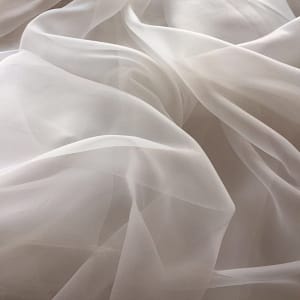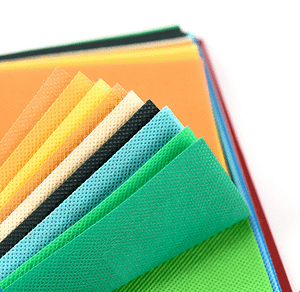Origins of Poplin Fabric
Poplin fabric has a rich history that dates back to the 15th century, with its origins rooted in Italy. The name “poplin” is believed to have been derived from the French word papillon (meaning “butterfly”), which referred to the fabric’s delicate texture. Initially, poplin was made from silk and wool, and it was highly valued by the European elite for its smooth, refined appearance.
The fabric became even more prominent during the Renaissance period, especially in France, where it was used for making luxurious garments for the nobility. As time progressed, the use of silk in poplin declined, and cotton began to replace it as a more affordable and practical alternative. By the 19th century, poplin fabric became widely accessible, not only for high-end fashion but also for everyday wear. Today, poplin is made from a variety of fibers, including cotton, silk, and synthetic blends, making it a fabric suitable for both casual and formal attire.
What is Poplin Fabric?
Poplin is a lightweight, tightly woven fabric known for its smooth and crisp texture. The key characteristic of poplin lies in its weaving technique—plain weave—where the weft (horizontal) yarns pass over and under the warp (vertical) yarns in a simple, uniform pattern. This results in a fabric with a smooth, almost lustrous surface, giving it a refined and polished look.
While poplin can be made from various fibers, it is most commonly crafted from cotton, making it breathable and comfortable for everyday wear. Poplin is also produced from blends such as cotton-polyester, which enhances its wrinkle resistance and durability. Silk poplin, on the other hand, is known for its luxurious sheen and softness, often used in high-end fashion garments.
Thanks to its versatility, poplin fabric is suitable for a wide range of applications, from shirts and dresses to uniforms and bedding. Its simple yet elegant appearance makes it a timeless choice for both casual and formal attire.
Characteristics of Poplin Fabric
Poplin is defined by several key characteristics that enhance its versatility:
- Smooth Texture: Soft and crisp, thanks to the plain weave structure, giving it a polished look.
- Lightweight and Breathable: Ideal for warm climates, poplin is airy and comfortable for everyday wear.
- Durability: Tightly woven for strength, poplin resists wear, making it great for frequent use.
- Wrinkle-Resistant: Blended poplin, especially with polyester, resists wrinkles, requiring less maintenance.
- Color and Design Versatility: Its smooth surface holds color well and is perfect for prints, available in a variety of designs.
Types of Poplin Fabrics
Poplin comes in several variations, each offering distinct qualities based on its fiber composition. Here are the most common types:

Cotton Poplin: The most widely used form, known for its softness, breathability, and affordability. It’s perfect for everyday clothing like shirts and dresses.

Silk Poplin: Luxurious and smooth, silk poplin has a subtle sheen and is often used for high-end fashion items, such as evening wear and blouses.

Polyester Poplin: A more affordable and low-maintenance option, polyester poplin is durable, wrinkle-resistant, and easy to care for, making it ideal for uniforms and casual wear.

Blended Poplin: A combination of fibers, such as cotton-polyester blends, offering enhanced durability, comfort, and wrinkle resistance, making it suitable for both fashion and functional garments.
Production Process of Poplin Fabric
The production of poplin fabric involves several key steps that contribute to its smooth texture and durability:
| Step | Description |
|---|---|
| Fiber Selection | Poplin can be made from cotton, silk, polyester, or blends. The choice of fiber affects the fabric’s texture, breathability, and durability. |
| Weaving | A plain weave technique is used, where the weft yarns pass over and under the warp yarns to create the smooth, uniform surface characteristic of poplin. |
| Finishing | After weaving, the fabric is treated to enhance properties such as softness, sheen, or wrinkle resistance. For example, cotton poplin may undergo a mercerization process to increase its luster and strength. |
Note: Make sure to emphasize the versatility of poplin across different fibers (e.g., cotton, silk, polyester) when discussing its production, as each type serves unique needs in the market.
Advantages of Poplin Fabric
Poplin fabric offers numerous benefits that make it a popular choice for both fashion and functional applications:
- Comfortable: Its lightweight, breathable nature makes it comfortable for all-day wear, especially in warm weather.
- Versatile: Poplin’s smooth texture and ability to hold color and prints make it suitable for a wide variety of garments, from shirts to dresses to uniforms.
- Easy to Care For: Poplin, particularly polyester blends, is low-maintenance, as it resists wrinkles and requires less ironing, making it an ideal choice for busy lifestyles.
- Affordable and Accessible: Available in a wide price range, poplin is an economical choice, making it a go-to fabric for both mass-market and high-end designers.
Uses of Poplin Fabric
Poplin’s smooth, durable, and versatile qualities make it suitable for a wide range of applications:
- Fashion: Poplin is commonly used for making shirts, blouses, dresses, skirts, and even suits due to its crisp appearance and comfort.
- Home Textiles: Its breathable nature and smooth texture make poplin a great choice for bedding, tablecloths, and curtains.
- Uniforms: Popular in corporate, school, and hospital uniforms, poplin’s durability, ease of care, and professional look make it ideal for these uses.
- Activewear: Light and breathable, poplin is also found in casual and activewear, offering comfort for daily wear or light outdoor activities.
Care of Poplin Fabric
Poplin fabric is relatively easy to care for, but specific maintenance depends on the fiber type. Here are some general guidelines:
- Washing: Most poplin fabrics are machine washable, but it’s best to follow the care instructions. Cotton and polyester blends can be washed in warm water, while silk poplin requires gentle handling with cold water or dry cleaning.
- Drying: Cotton and polyester poplins can be tumble-dried on low heat, but air-drying is recommended for silk poplin to preserve its quality. Always avoid high heat to prevent shrinking or damage.
- Ironing: Poplin is naturally smooth, but if wrinkles occur, iron on a low to medium setting, especially for cotton or blended poplins. Silk poplin may require a cooler iron or steam treatment to avoid damage.
Future Trends in Poplin Fabrics
Poplin fabric continues to evolve with changing consumer preferences and advancements in textile technology. Here are some of the current trends and future directions:
- Sustainability: There is a growing demand for eco-friendly poplin, particularly those made from organic cotton or recycled fibers. This aligns with the broader fashion industry’s shift toward more sustainable materials and ethical production practices.
- Performance Fabrics: Blended poplin fabrics with added stretch, moisture-wicking, or anti-microbial properties are gaining popularity, especially in activewear and performance apparel. These innovations enhance the fabric’s functionality for modern lifestyles.
- Luxury and High Fashion: While poplin has always been a staple in casual and uniform wear, it’s also making a comeback in luxury fashion, with high-end designers using silk and finely woven cotton poplin to create elegant garments that combine sophistication with comfort.
- Customization and Innovation: New printing techniques and fabric treatments are allowing for more customization in poplin fabrics, from digital prints to eco-friendly dyeing methods, making it even more versatile for both fashion and home decor applications.
Conclusion
Poplin fabric‘s smooth texture, durability, and versatility have secured its place as a timeless favorite in the textile industry. Whether made from cotton, silk, polyester, or blended fibers, poplin offers a wide range of benefits, from breathability and comfort to low-maintenance care. Its ability to be used in everything from casual wear to high-end fashion ensures that it remains a go-to fabric for various applications.
Looking to the future, poplin is adapting to new consumer demands for sustainability, performance enhancements, and luxury, ensuring it will continue to be a relevant and essential fabric in both the fashion world and everyday life. Its combination of comfort, style, and practicality makes poplin an enduring fabric choice for many years to come.






